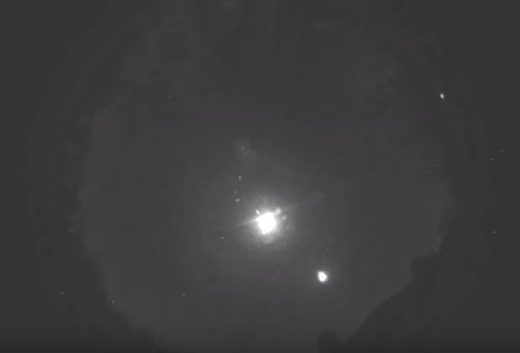
The SPA Meteor Section collects and analyses data on fireballs seen primarily from the British Isles. However, for this to be possible, we need witnesses to send in reports of what they saw. When a fireball has been seen from more than one location, it is possible to combine the individual reports and work out the trajectory the the fireball followed through the Earth’s atmosphere and also its former solar system orbit. By internationally agreed definition, any meteor that attains magnitude -3 or more is classed as a fireball. "It's a lot cheaper when nature gives to us.A bright fireball near the Moon, imaged from Wilcot, Hants by Richard Fleet at 01:23 UT on 2014 Aug 12 What is a Fireball?Ī fireball is simply an especially bright meteor. "It's nature bringing us something we can sample, as opposed to us building spacecraft and going and grabbing something and bringing it back," Cochran said. 12-13 with as many as 90 meteors per hour, though visibility is expected to be affected by the moon's brightness. The next anticipated meteor event, the Perseid meteor shower, is predicted to peak Aug. Fireballs can travel at a rate of 10 meters per second and faster. In addition, the brightness of the streaking flame was the result of the fireball's high velocity as it traveled through the atmosphere. "So you won't see a big rock come down, we'd see little bits of things. "Meteors basically come from either the asteroids, which are rocky and metallic bodies, or comets, which are much more fluffy and icy bodies with some amount of rock," Cochran said. While the fragments that punched through Earth's atmosphere did not create catastrophe, the ability for them to arrive on Earth might hint at the origin of the rock. More: New firefighter class graduates in Pflugerville "Neat feeling, glad to be alive and glad it didn't, you know, change Earth's trajectory." And so to see one just make a bright flash and then just kind of disintegrate, it's an incredible experience," Hansen said. "I think it's one of those things that meteors are portrayed in movies as like, the Earth is going to end. Video from her home's security camera in North Austin confirmed the suspicion.
#Flying fire ball series#
Additional sightings were recorded in both Oklahoma and Louisiana.įor Jenny Hansen, a series of messages from friends and family let her know something was going on with the Texas sky.

Outside of Austin, many sightings were reported in San Antonio with other reports ranging from Texas' southern border to the Red River. "But exactly what it is, where it came from in the solar system, we won't know unless we actually get pieces of it or somebody has enough data on it to work the orbit back.

"It's people standing outside, and taking videos and catching it that way that we use," Cochran said. While the Earth is hit by meteors daily, they seldom reach the ground, which limits the ability for researchers to determine where the space rock came from or the orbit it took to arrive on our planet.Īs a result, scientists often refer to video captured by those lucky enough to be watching the night sky at the time of the flash. More: 'Essential to prosperity': Why Austin-area demand for industrial space is soaring "It's very uncommon for it to get all the way through." "The fact that this one stayed so long, and appeared to come down very far into the atmosphere, probably means it was fairly large," said Anita Cochran, assistant director for research support at the University of Texas McDonald Observatory. Many witnesses to the celestial show also reported hearing a sonic boom, which is an indication that small meteorite fragments from the fireball, thought to be the size of a small car, might have reached the ground, the Meteor Society said. The fireball, which was larger and brighter than a typical meteor, crossed through Central Texas airspace shortly before 11 p.m., resulting in over 200 reported sightings with dozens coming from the Austin metro, according to the American Meteor Society.

The eyes of Texas were fixed on the night sky Sunday as a fireball visibly scorched through the air before dissipating from view west of Austin.

Watch Video: Huge Meteor fireball descends and lights up the night sky


 0 kommentar(er)
0 kommentar(er)
